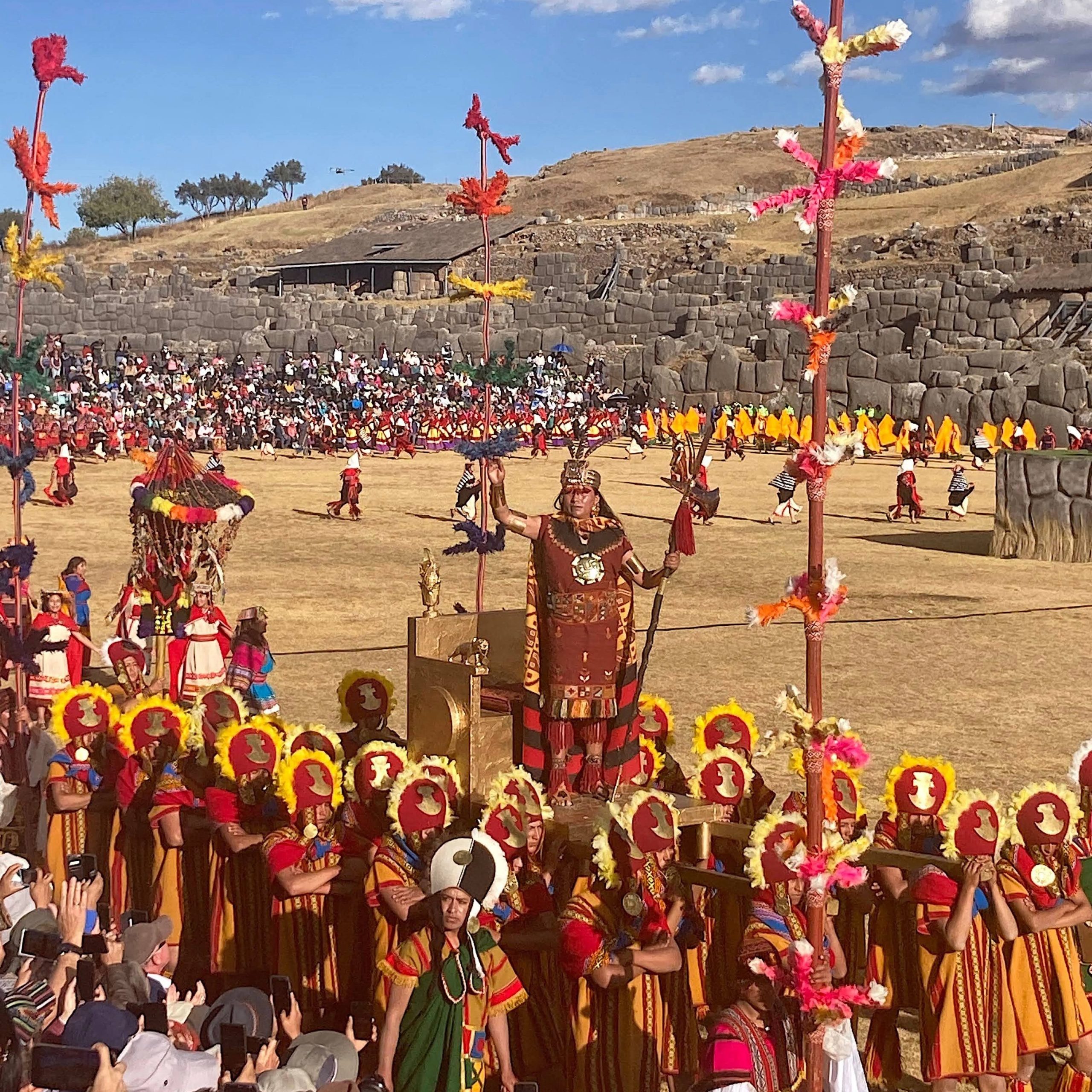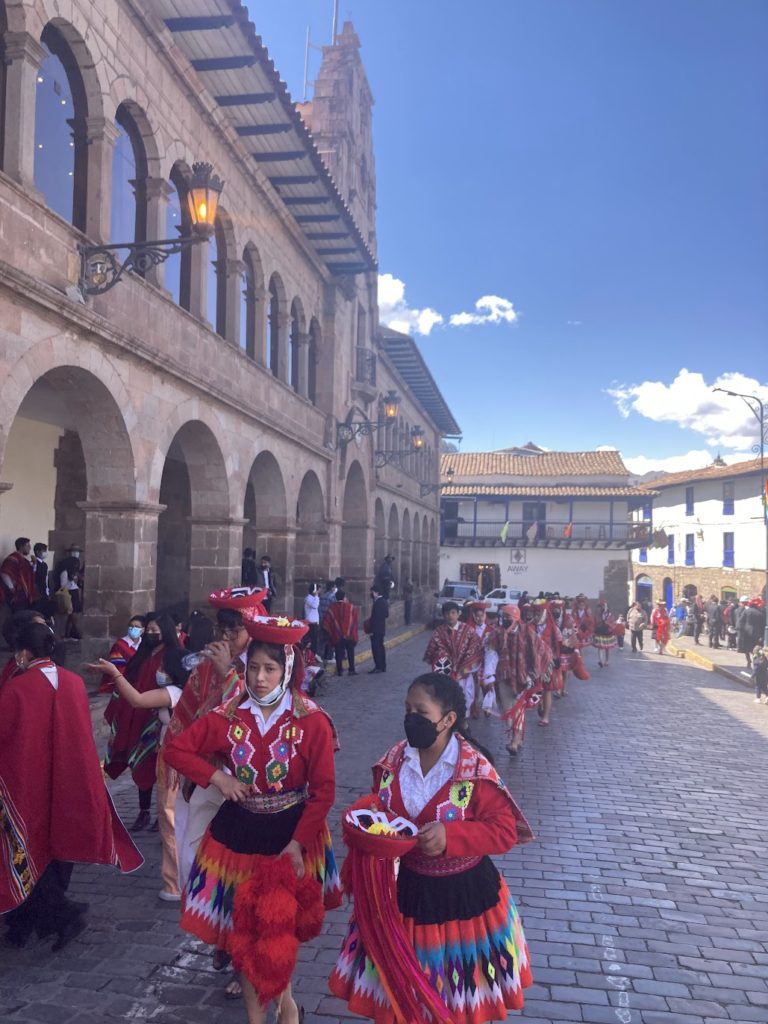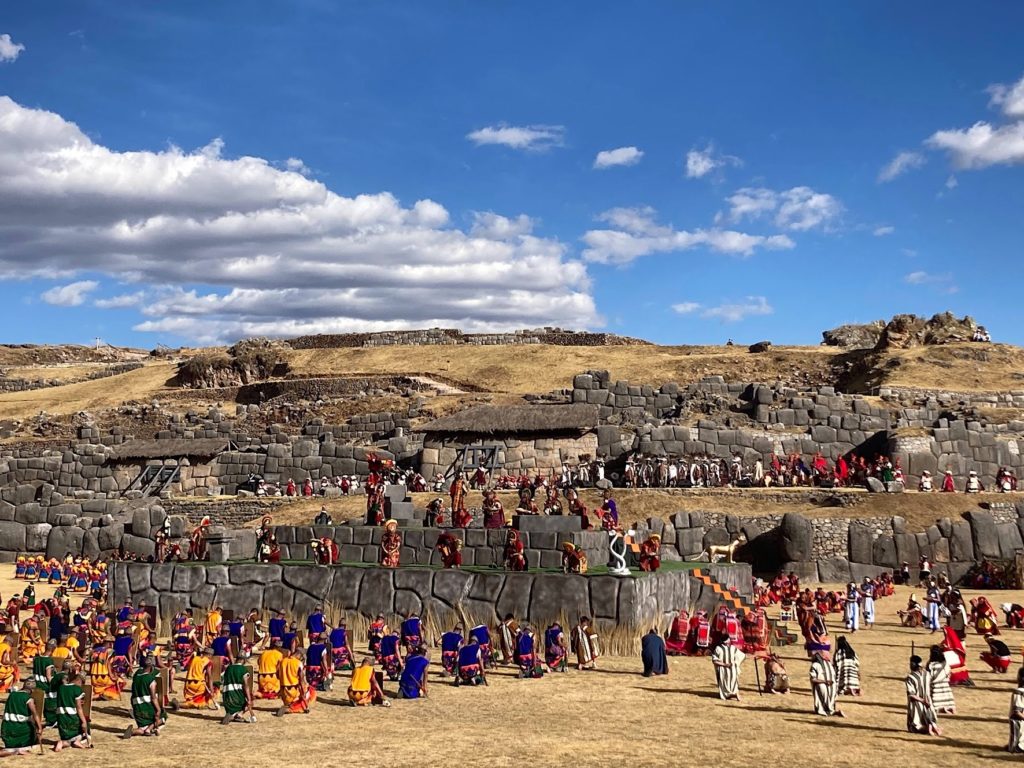
The history of Cusco is one full of conquest and tragedy. Some 700 years ago, Cusco was the capital of the largest empire in the world, named by the Spanish for the title of its emperor, the Inca. Despite Spanish efforts to expunge all evidence of native culture, Cusco has preserved its language and traditions remarkably well. Many Cusqueños speak the native Quechua language and respect Inca deities like Pachamama (Mother Earth). This respect for native history constantly surprises me because native culture suffers from such lack of recognition in the United States.
June is Cusqueño history month. That means that the iconic rainbow flag of Cusco, which I mistook for a Pride flag until I saw one hanging in the Cathedral, hangs from every building. All the students and teachers in the elementary schools wear traditional Cusqueño rainbow ponchos. University graduates parade through the Plaza De Armas in full traditional dress from their native regions of Peru, performing traditional Inca dances as they finish their education in a packed public ceremony. Street artists play pan pipes and indigenous instruments along with acoustic guitars. The appreciation and celebration of native heritage is everywhere.

At the end of June is Inti Raymi, the Inca celebration of the sun. Originally celebrated on June 21, the winter solstice, this massive ceremony takes the whole day on June 24. Cusqueños dressed in full traditional attire reenact the original process of the Inti Raymi celebration. They start with a blessing and short ceremony at the Qoricancha (Temple of the Sun) and move on to the Plaza, where they perform a dance and bless the mayor of the city with all of Cusco watching. After that, the performers climb to Saqsaywaman, the ancient ceremonial site overlooking the city, and reenact the ceremony and dance that has been performed there for over a thousand years. I watched this ceremony with hundreds of people from all over the world, reading translations of Quechua as I watched. Before the ceremony, I was interviewed in Spanish for the Peruvian national news and asked why I came to Inti Raymi and what I thought of Cusco! Practicing my quickly improving Spanish, I told the reporter that I was stunned by the level of respect Peruvians have for their native history, as this is not the case in my country.
The Inti Raymi celebration at Saqsaywaman is about three hours long. First, representatives from the four regions of the empire enter with servants and offerings for the Inca and the head priest. The head priest asks the gods to protect Cusco and ensure its success, and predicts the fortune of the Quechua people. Servants capture and sacrifice a llama (a fake llama is used now) and burn it in offering. Other sacrifices to Inti, the sun god, include grain and chicha morada, a sweet drink made from fermented purple corn. After all of the official proceedings were over, people crowd in the Plaza for concerts, traditional dancing, drinks and fireworks.

That’s all for now, but I’ll update soon with some pictures of my adventures around Peru!